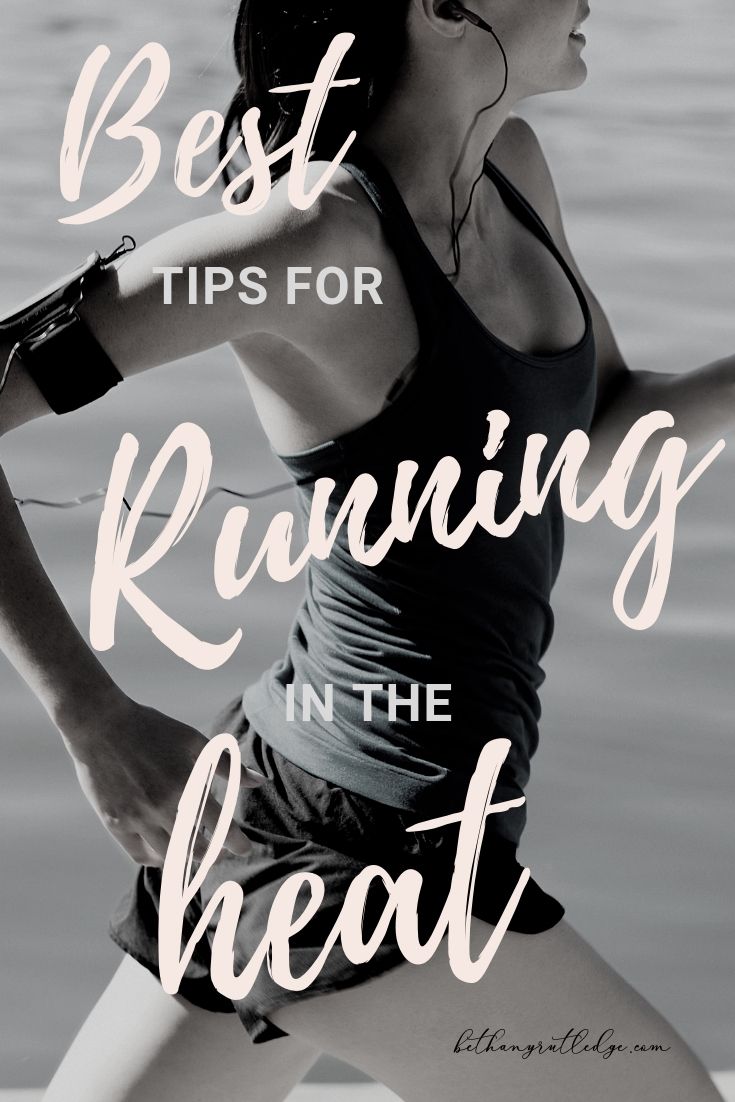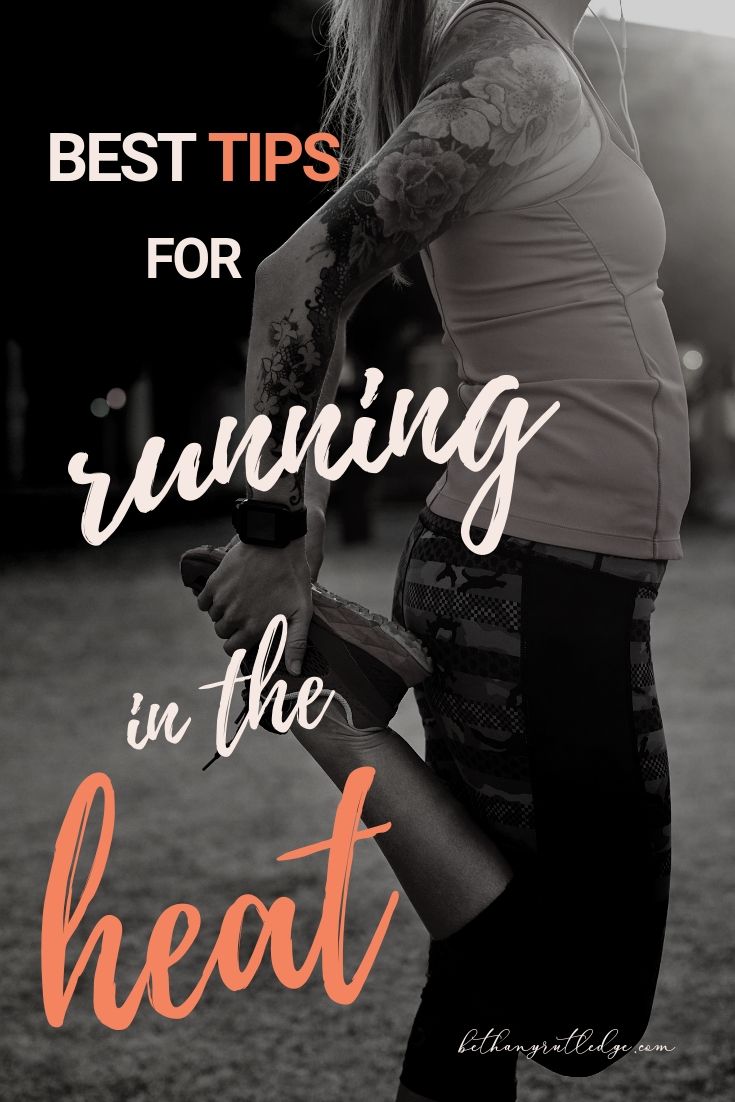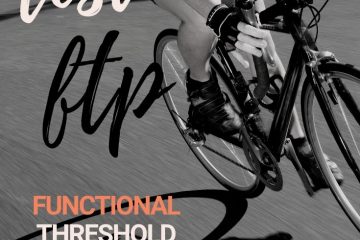Tips for Running in the Heat

Tis’ the season for running in the heat. Here’s how to do it right.
The prospect of a hot race day is anathema to runners and triathletes everywhere.
In Georgia’s shoulder seasons a May or September race could be 60 degrees or 90 plus. With the anticipation of weather comes all kinds of heat preparation strategies some good, some ill-advised.
Although I personally love the heat, we all have our limits! I’ve experienced the both windstorm, dry heat, and nearly 30% DNF rate of IRONMAN St. George 2012, and IRONMAN Couer D’Alene 2015, the hottest day on record (110!) since 1884.
Heat Acclimation Training
You have to train in the heat to perform well in the heat, but you’ll get more out of your quality training by training in a cooler environment. How should you approach getting acclimated while also balancing with quality training for maximum performance gains?
Today I’d like to share a few of the common mistakes I see with heat training as well as a saner approach to heat training.
Triathlon Heat Training Mistakes
Triathlon Heat Training Mistake #1: Running too hard in the heat—
We’ve all know folks who literally “go all out” for heat training: mile repeats on a 100 degree July afternoon, donning plastic suits high school wrestling style, or cycling intervals in a sauna.
Triathletes, who are typically type A personalities, are exactly the type to think more masochism is better. Thus it’s not unusual to see their triathlon heat training include doing intervals at noon in July.
Triathlon Heat Training Mistake #2:Ignoring heart rate —
It doesn’t make sense to run by pace all the time. In fact, there are some key heat-related situations in which to ignore pace in lieu of heart rate.
Triathlon Heat Training Mistake #3:Avoiding all heat training—
On the opposite end of the spectrum are those who ignore heat training completely. We’ve seen the walking dead examples of those who go out too hard, too fast, or unprepared in extreme conditions.
So what’s the best way to make sure you’re effectively preparing when the mercury goes up in a safe, effective way without sacrificing quality AND without taking a trip to the hospital for IV rehydration on a regular basis? Does this even exist?
How running in the heat helps
Data shows light to moderate exercise can actually have a major effect when it comes to acclimation and performance.
So yea, that means dealing with heat on the run for triathlon. One study demonstrated that exercising lightly in heated conditions had a major effect. The protocol included cycling at a submaximal intensity for ten days at 50% of Vo2 max.
The intensity was kept low to “represent compensable heat stress sufficient to induce heat acclimation, but not be sufficient to induce training adaptations for our highly trained athletes.”
Subjects performed these heat sessions in addition to their regular training. The results showed a 5% performance improvement in a subsequent time trial compared with pre-test time trails! Furthermore, these performance advantages carried over to both a cool environment and a hot environment.
Although this study only looked at cyclists under very controlled conditions, we can likely carry over some lessons to running in the heat and training adaptions in general.
So what’s the best way to take advantage of heat training benefits without sacrificing quality?
Perform some easy/short sessions in the heat—
No need to perform key intervals sessions or tons of race pace training in the heat. Light training in the heat can be enough to stimulate adaptions.
Factor in recovery time —
You have to keep in mind the cost of a session. While the extreme predilection of a triathlete “more is better” may cause one to immediately plan their threshold training or mile repeats in a heated environment to improve on those purported 5% gains, keep post sess recovery time in mind.
Don’t sacrifice next week’s training—
Imagine the reason why we (most of us, at least) don’t do weekly 100 mile ride/10 mile bricks at race pace. The requisite recovery cost is so high that it nearly takes us out of any quality training until next week’s megabrick!
Plan ahead of time—
Schedule Thursday’s easy run during the day but start Saturday’s early AM long run before the sun comes up!
Seek optimal (read:cool) conditions for key session—
If your goal is to hit certain paces or wattages, you’re better off giving yourself every advantage in terms of recovery, fueling, and optimal temperatures

Perform Submaximal exercise in heat
And above all, remember science says that Performing submaximal exercise is enough to stimulate heat adaptions.
Practically that means…
- start early in the morning
- use a fan for indoor sessions
- seek a cool environment if indoors
- fuel before/during/after sessions
_____________
Running in the heat tips
Consider ignoring pace and using heart rate instead during easy runs, triathlon races, and hot weather.
Be sure to check out running with pace versus heart rate for more advice about running in the summer months.
The Easy Run—On a hot summer’s day, your pace may very well be zone 2 while your heart rate is zone 3 and beyond. This is a situation where I advise my athletes to look at heart rate as the primary driver. If you are constantly running at a high heart rate to hit an arbitrary pace on easy days, then you’ll be too worn out to hit your quality workouts.
Summer Easy Run Tip: The idea of an easy day is that it’s truly easy, so don’t get caught up in worrying about what your easy pace was during the cooler months!

The Track—Besides the treadmill, the track is the closest we have to all factors being equal—it’s flat, and it’s a standard length. This is why it’s the preferred place to run set distance intervals with pace as a primary driver.
Summer Track Tip: Start early. Start earlier than the time that just popped in your head. If the goal is to hit the pace, then you want to make it as easy for yourself as possible, which means running in the coolest part of the day, early morning or late evening.
The Long Run—If you’re training for a half or full marathon, your key long runs will likely include some miles at race pace. For these runs, consider using a mix of heart rate and pace to execute your long run. For instance, if you are targeting a 13-mile long run with the last three miles at race pace, run the first 10 by heart rate (i.e., at an easy pace). That way when it’s time to ramp it up, you won’t already be exhausted from arbitrarily trying to hit a pace in the beginning.
Summer Long Run Tip: Don’t make the mistake of running long in the middle of the day “for heat acclimation.” Doing shorter, easier, or occasional workouts in the heat is heat acclimation. Performing key workouts in the heat is self-defeating overkill.
The world’s hottest races
Notoriously Hot Races- Were you a part of one of these record breaking days?
Ironman China 2009– Reportedly the temperature on this day broke 110 degrees and the heat index was 120+ !
Muncie 70.3 2012– Over 100 degree temps force race officials to shorten this race
Louisville 2010– Louisville is hot every year, but in 2010 IM LOU had a 16% DNF rate, at the time the highest on record. (Source: Raymond Britt at Runtri.com)
Ironman St. George 2012– At the now shortened IM St George, heat was only one complicating factor that ultimately led to the highest DNF rate in history. Participants also had to contend with 40 mph winds on the swim and bike. Ultimately 29% did not make it to the finish! (Source: Raymond Britt at Runtri.com)
____________________

What’s your biggest heat training mistake? We asked triathletes to identify their biggest mistake when racing in the heat. Overwhelmingly the responses centered on hypernatremia due to chugging plain H2o (and foregoing electrolytes) in the days preceding, during, and/or after the race. What were the consequences? Trips to the medical tent, DNFs, and hospital visits!
How do you approach heat training? I’d love to hear your best tips, or your worst mistake!
Looking for courage to try something new? I’m here for that. Join 1470 others for a mostly-weekly dose of mojo.

Hi, I’m Bethany–coach, author of Courage to Tri, 2x Kona qualifier, and twin mom. I believe if you have a body you’re an athlete. Grab my free 5k plan to start your own athletic journey.
Want some virtual or in-person company on those long runs? Training is more fun with community. Check out Atlanta Tri Club for group training and Energy Lab for triathlon and swim coaching!
Training Resources for You
- Ultimate Guide: How to start cycling
- Find your runner personality [ to go faster]
- Top 4 worst new runner mistakes
- How does Garmin race predictor work?
- The real deal on getting back in shape after baby
Like this heat training idea? Pin it!

More Running in Heat Tips
7 Tips for Running in Heat and Humidity
6 tips on running in the summer heat | Pinoy Fitness
10 Warm Weather Running Tips: How to Run in the Heat Safely
Secrets and Tips for Running in the Heat
Running in the Heat: 10 Tips You Should Consider
6 Tips to Make Running in the Heat (Much!) Easier – Women’s Running
Running in the Heat and Humidity ~ 5 Tips



19 Comments
Erin · June 25, 2019 at 12:28 pm
Great ideas! Running early in the morning always is helpful when it is hot out. Luckily (or unluckily) our weather hasn’t been too crazy yet this summer!
Bethany · June 25, 2019 at 2:46 pm
You must live somewhere different than me! 🙂
Maggy · June 25, 2019 at 8:24 pm
I love this! I sometimes run outside and prefer it over the gym because its more natural.
I also drink lots more water when running outside.
Thanks for the tips!
Bethany · August 2, 2019 at 1:31 pm
Yes Maggy I agree running outside can definitely be a pick me up!
Brittany · June 26, 2019 at 1:06 am
These tips are great because I am the person at the end of the spectrum who avoids heat training altogether so I need this!
Bethany · August 2, 2019 at 1:32 pm
Brittany if you try running outside in the heat let me know!
Amanda · June 26, 2019 at 1:35 am
Great info! Running in the heat can be super dangerous, a young boy in my town (in great shape, getting ready to run for a Div I school) died from heat exhaustion. It should be taken very seriously!
Bethany · August 2, 2019 at 1:32 pm
That’s really scary to hear Amanda! None of us are invincible to it.
Bethany · August 2, 2019 at 1:33 pm
Oh yes… so humid in Charleston but also a lovely place to run!
Hoang Vi Fessenden · June 26, 2019 at 5:30 am
Great tips as I live in charleston, sc the swamp land humid!
Samantha · June 26, 2019 at 12:05 pm
These are great ideas! Since I’m pregnant this summer and having a number of issues, that means no running allowed! I do look forward to checking into these next summer after baby is born and I’m back on the “get in shape” track!
Bethany · August 2, 2019 at 1:33 pm
Yes! I have been there as I was pregnant last summer. I loved walking during that time.
Patrick · July 11, 2019 at 6:03 am
Your tips on running in the heat are useful. I wonder why you didn’t discuss clothing.
I’m currently running across the country wearing xbionic. It makes a huge difference. I wouldn’t try to do this trip without it.
Consider looking into xbionic and similar clothing.
Enjoy your summer!
Bethany · July 16, 2019 at 1:06 pm
Thanks for the tip, Patrick. I’ll definitely look into clothes made specifically for running in the heat.
Ultimate Guide: your sprint triathlon training plan — Bethany Rutledge · July 1, 2019 at 2:53 pm
[…] Read: Top tips for running in the heat […]
Your 23 questions about how to start running — Bethany Rutledge · July 1, 2019 at 5:57 pm
[…] 22. How can I run well in the heat? […]
The best 5k pacing strategy for all levels — Bethany Rutledge · July 13, 2019 at 1:48 pm
[…] Read: Tips for running in the heat. […]
Homepage · July 18, 2019 at 8:59 am
… [Trackback]
[…] Read More Infos here: bethanyrutledge.com/blog/tips-for-running-in-the-heat/ […]
Should I use a fan for indoor cycling training? — Bethany Rutledge · July 23, 2019 at 5:12 pm
[…] Related: Nailing heat training for runners […]
Comments are closed.